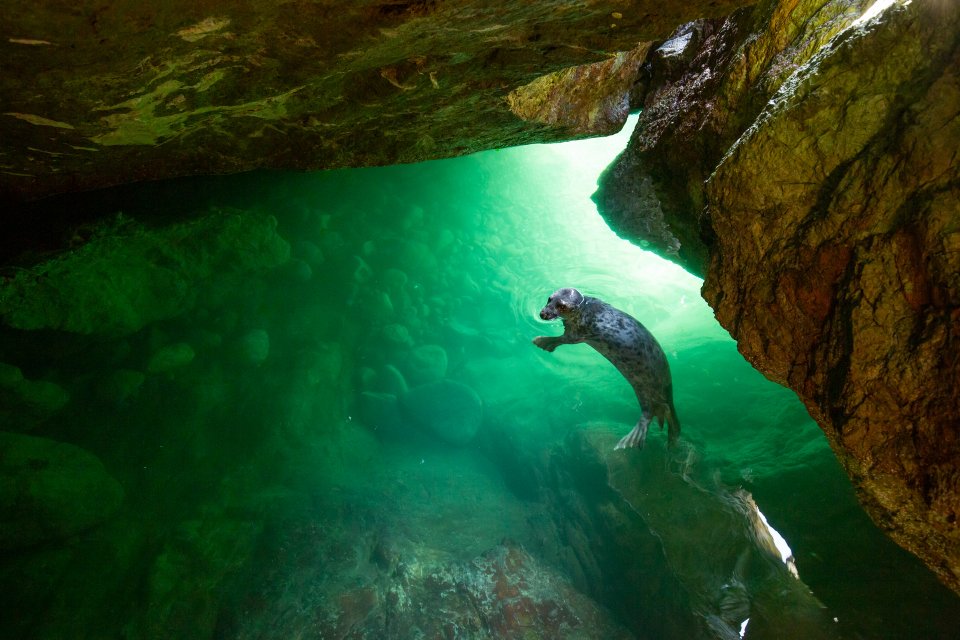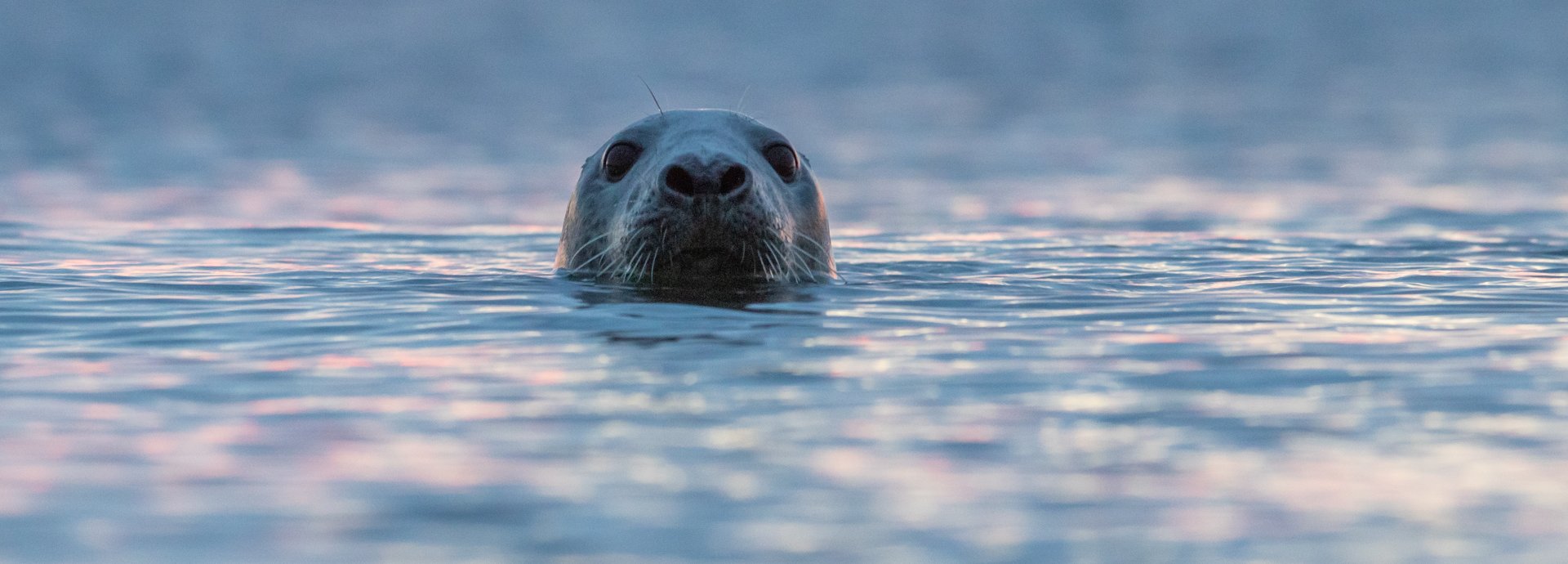Grey seal – Halichoerus grypus
Grey seals Halichoerus grypus are among the rarest seals in the world – the UK population represents about 40% of the world population and 95% of the EU population.
At the start of the breeding season, Great Britain has some 124,000 grey seals, with a further 300-400 found around the Isle of Man and Northern Ireland. There are pupping sites (rookeries) on many coasts between the Isles of Scilly in the south-west, clockwise around the coast of the UK to Donna Nook in Lincolnshire. The largest of these rookeries are in the Inner and Outer Hebrides, Orkney, Isle of May, Farne Islands and Donna Nook. Less than 15% of pups are born away from these rookeries, but there is an important breeding population on the west Wales coast. Since the late 1970s, no licences have been issued in the UK for commercial hunting or large-scale control measures, and the population has increased markedly since that time.
The fact that these animals are wide ranging and are thought to inter-mix makes it very difficult to estimate seal numbers in the SAC with confidence. Westcott (2002) tentatively estimated North Wales grey seal numbers at 365 based on pup data collected during a 2001 survey. However, the number of grey seals present in the waters of North Wales at all haul-out sites was, at all times, greater than this, with no less than 700 750 seals in winter and the maximum figure (June, July, August) at c. 1100 (Westcott, et al 2003). This reflects the extent to which seals circulate around the Irish Sea and perhaps beyond.
The Pen Llŷn a’r Sarnau SAC contains a number of important grey seal haul-out sites, both pupping and non-pupping, which are dependent on supporting habitat. The exact habitat requirements of the grey seal are unknown – seemingly suitable habitat is often not occupied by seals. The habitats used by grey seals in the SAC and elsewhere in North Wales are intertidal rocky outcrops, rock and boulder/cobble beaches, sea caves that are tidally exposed, and occasionally sandy beaches and tidally exposed sandflats. For north Wales in general and specifically within the SAC, sea caves are a major supporting habitat with approximately 67% of seals pupping within caves during 2002 (Westcott, et al., 2003) and the remainder being born on beaches. The non-pupping haul out sites are concentrated around the NW of the SAC and include Ynys Enlli (Bardsey Island).
The feeding habits of grey seals in North Wales are unknown, but are unlikely to differ significantly from grey seals from other locations. Grey seals feed a great deal on and close to the seabed, feeding on a wide range of fish species including sand eels. Little is known about the extent and quality of the food source available within the SAC and beyond, but the persistent occurrence of about 100 pups a year in recent years would tend to indicate adequate food availability.
A range of viral, bacterial and parasitic diseases are known to be endemic within seal populations but, apart from phocine distemper epizootic virus (PDV), have limited effect (at the population level) on healthy, unstressed adult seals. The episode of PDV in 2002 extended around the North Sea basin and as far north as the Irish Sea coast. Although principally causing heavy mortality among common (harbour) seals, some grey seals also died on British coasts (SMRU, 2002). There have been no records of PDV in North Wales’ seals, and their physiological health as a regional group is presumed good/intact.
One of the key considerations for the conservation of the grey seal within the SAC specifically, and as part of an extended population in North Wales and beyond, is disturbance of breeding and haul-out sites by human activity. With very few exceptions, seals within the SAC choose to haul-out on rocky shores or in sea caves currently remote from access by humans. In areas that have a high incidence of human influence through coastal walking, boating, fishing or other activity, the grey seal is generally not present where it may once have been. Other issues relate to entanglement and incidental capture of seals in line and netting, pollution and reduction or changes in food availability.

